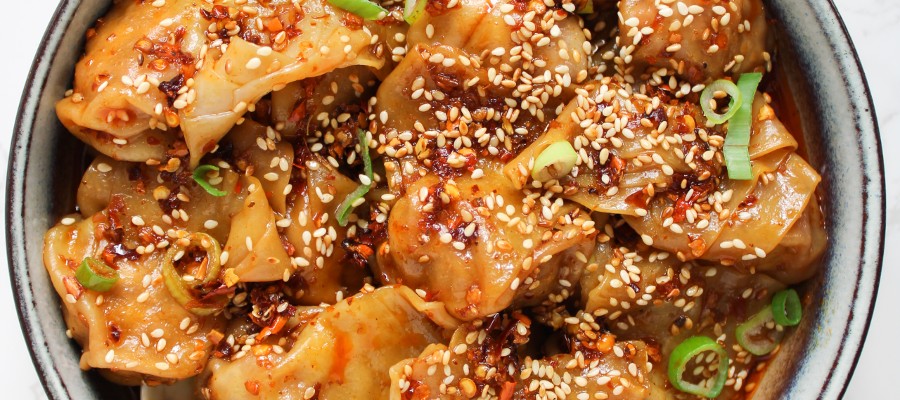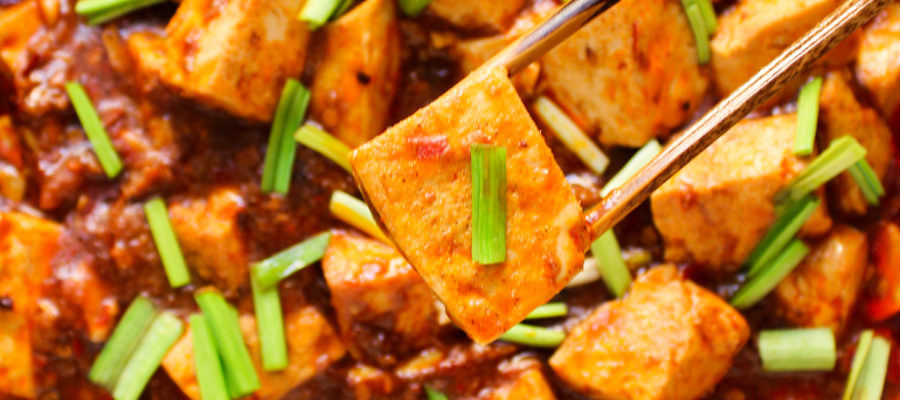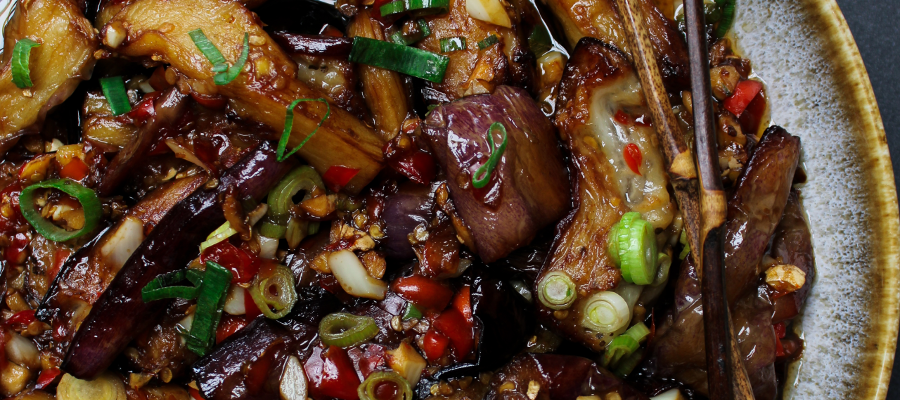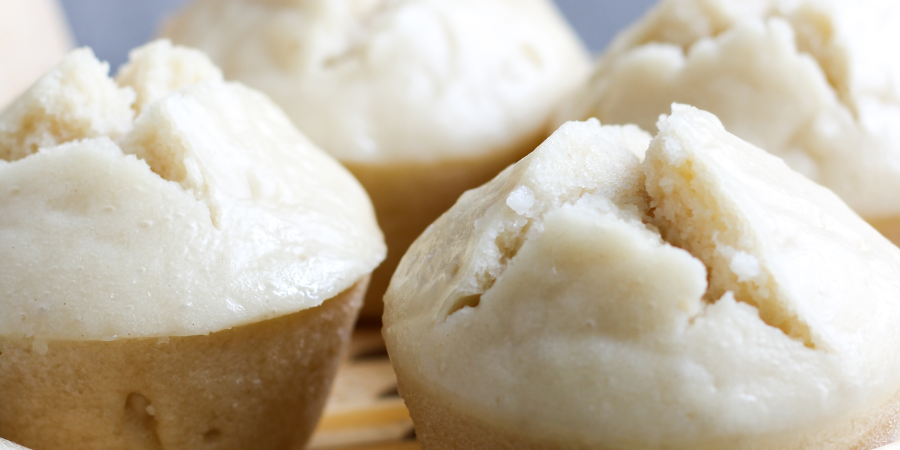Yang, author of Vegan Chinese Food, shares her top four recipes to celebrate Chinese and Lunar New Year.
A little something about me
Hi, my name is Yang. I have a little food blog on Instagram where I have been sharing Asian vegan recipes for the last four and a half years. My first cookbook Vegan Chinese Food came out in January 2024. In the book I share my personal story, my love for the rich Chinese cuisine along with 86 vegan Chinese recipes. Some are traditional recipes which have always been plant-based and gluten free, as well as some recipes I have developed myself.
I was born in the Hunan province in China, which is probably the spiciest region in China. I moved to Guangzhou, the capital city of Guangdong when I was 6 years old, which is in the least spicy region of China. My earliest memories were always intertwined with different foods from my hometown. Growing up I have lived in and travelled to many different regions in China, where I explored and appreciated a variety of food.
Many people assumed that veganism is a trend that started in the West and now has reached the rest of the world. However, like many other Asian countries, China has a very long history of veganism, which was intertwined with the widespread adoption of Buddhism over many centuries. Tofu was invented over 2,000 years ago and vegan meat substitutes were already documented in a book from the 12th century.
I was always drawn to the idea of veganism before I even knew anything about climate change or Buddhism; I just could not stand to see animals suffer. Being vegan in China is easy because of the incredible variety of the ingredients and food options available, but also really difficult when it comes to the pressure and misunderstanding from family and society, as most people still believe you have to eat meat to be healthy. I became vegetarian in 2016 and turned vegan after a while. It is my goal to recreate and veganise all the traditional dishes I loved when growing up and use this approach to further explore Chinese cuisine.
Chinese New Year and its traditions
Chinese New Year, also known as the Lunar New Year or the spring festival, is the most important traditional holiday in China. It is not only celebrated in China and by Chinese people around the world, but also in many Asian countries like Vietnam, Singapore, Malaysia, Thailand where they have a different Lunar New Year to China.
Chinese New Year originates to a few thousands years ago. According to the lunar calendar, the spring festival marks the end of winter and the beginning of spring. The exact date of the Chinese New Year varies every year, but it always falls between late January and early February. This year is the Year of the Dragon, which begins on 10 February.
Chinese New Year is the time of the year when people travel across the country to be with their families. The main celebration is the New Year's Eve dinner, which is called the Reunion Dinner (Nina Ye Fan '年夜饭' in Chinese). Similar to Christmas Eve dinner, this is the most important meal of the year for Chinese people. On the doors and walls are red decorations and everyone dresses in red, which is the colour of Chinese New Year. Dinner tables hold an incredible array of food, including traditional Lunar New Year dishes, alongside family specific dishes. In my family, a must have dish is turnip cake – a Cantonese dim sum dish traditionally made with cured sausage. We make the vegan version with daikon radish, rice flour and shiitake mushrooms, and sometimes serve it with spring rolls.
The most common scene of New Year's Eve is cooking and enjoying delicious food together. They will chat and stay up until after midnight. At 12 at night, the sky is lit up by fireworks. The food served depends on the region. In the north, especially the north-eastern regions, dumplings definitely play the most essential role in celebration. Family members will prepare a lot of dumplings together, cook some for the Reunion Dinner and leave the rest outside in the yard or on the balcony, which is normally colder than the freezer.
In many northern regions, handmade noodles with different toppings are an important food on New Year's Eve. Noodles symbolise a long life and are also typically eaten on birthdays in China. In the southern regions, where noodles and dumpling are no longer common, a large variety of dishes are served and commonly enjoyed with white rice.
In the past when most people could not afford meat, the Lunar New Year was one of the rare opportunities where they could eat meat. Nowadays the Reunion Dinner is very meat centric, as people think they must bring the best food to the table, so you don't normally see a lot of veggies at the table.
It is important to note that in Chinese cuisine, like many other Asian cuisines, dishes are shared by everyone at the table.There is normally no differentiation between appetiser, main dish and dessert, as all dishes are typically served about the same time.
Another food which is very common during Lunar New Year is glutinous rice cake (Nian Gao年糕), which translates directly into ‘Year Cake’. It is normally served sweet but you can also fry or stir fry it. Nian Gao is a festive food that is believed to bring good fortune and the promise of a better year.
I was born and raised in the south and normally I would make a lot of dishes for New Year's Eve dinner, such as pan-fried tofu with fresh pepper, sweet sour lotus root, hong shao kao fu (red braised grilled gluten), buddha's delight, kung pao king oyster mushrooms, sticky rice cake and many other delicious dishes from my cookbook. This year I did it a bit differently. I prepared both spicy and non-spicy hot pot with a lot of veggies and different kinds of tofu to share with a group of friends. It was much easier than cooking so many dishes together and so many flavours could still be tasted at the same time.
The traditional Lunar New Year is considered to be over after the 15th day of the New Year, which is another traditional holiday called the Lantern Festival (Yuan Xiao 元宵节). On this day, people will go out the see traditional Chinese lanterns and eat Tangyuan (called Yuan Xiao in the north) which are glutinous rice balls with fillings. The word ‘Tangyuan’ sounds similar to ‘tuan yuan’, which means family reunion in Chinese, therefore is a food that symbolizes family unity and harmony. Most of the Tangyuan/Yuan Xiao are vegan, with a typical filling being black sesame, but in some regions they can also be filled with meat.
Four recipes I recommend to celebrate
Wontons in Chili Oil
This is a recipe based on a very popular street food dish from Sichuan. These wontons have a thinner wrap and are in general smaller than normal dumplings. They are first cooked and then served with a spicy sauce made with chilli oil, chopped garlic and other seasonings. The wontons are very rich in flavour and quite easy to make.

Mapo Tofu
This is a traditional recipe from Sichuan and is also one of the most popular tofu dishes in Chinese cuisine. The history of this dish dates back to the 19th century and was allegedly invented by a woman called ‘Chen Mapo’. Chen was her last name whilst Mapo was a nickname which refers to a woman with a freckled face.
Mapo Tofu is originally cooked with a bit of minced beef and Sichuan peppercorn, which is known to be mouth-numbing. In this recipe I substituted vegan mince for the beef mince, which is delicious and easily accessible.
 Yuxiang Eggplant
Yuxiang Eggplant
This eggplant dish, originally from Sichuan, is hands down the most popular and delicious eggplant dish in Chinese cuisine. Yuxiang is a famous seasoning mixture in Sichuan cuisine – typically savoury, sweet, sour and slightly spicy. It literally means 'fish fragrance', allegedly because the eggplant was originally cooked in chilli pickled with fish. Despite its name, nowadays the recipe has nothing to do with fish.
The key to this recipe is to use a lot of garlic and pickled chilli and stir fry quickly with the sauce, which brings a very strong, aromatic flavour to the eggplant.
 Fa Gao
Fa Gao
Fa Gao is steamed sponge rice cake. It is a sweet pastry popular in some southern regions, typically eaten during the Lunar New Year. Fa’ means ‘become rich’ in Chinese, so this is a food that symbolised good fortune and prosperity. This recipe requires simple ingredients and yet is rich in consistency and flavour.
 About the author:
About the author:
Blog written by Yang Liu, chef and author of Vegan Chinese Food. If you are interested in the plant-based diet and would like to explore more Asian vegan recipes, you can check out Yang's channel @littlericenoodle on Instagram or visit her website: littlericenoodle.com.
The views expressed by our bloggers are not necessarily the views of The Vegan Society.

